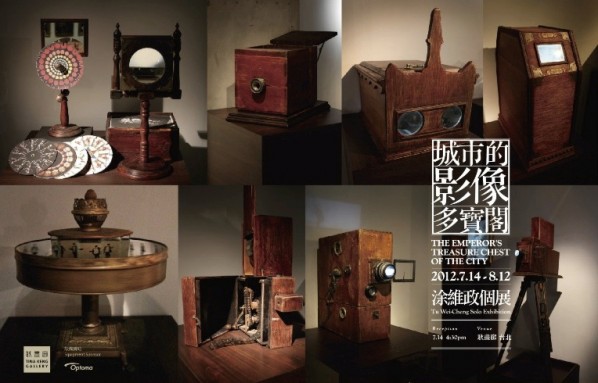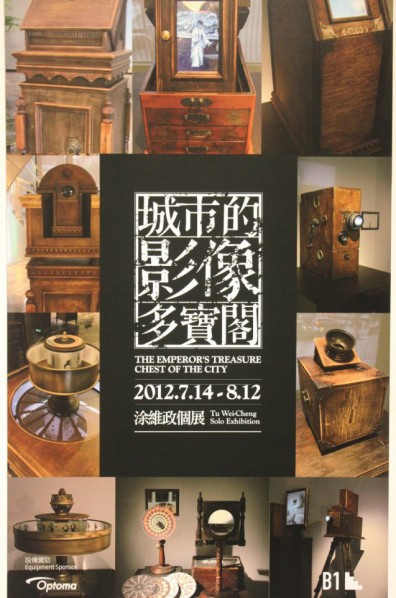
In Tu Wei-Cheng's works, the artist plays the roles of an art-creator, a curator, and an art promoter/an art dealer, who motivates the circle of academy, commodity, and the media. Entitled “The Emperor’s Treasure Chest of the City”, this massive work project irrationally commixes our stark experiences and memories of civilized relics, conventional artifacts with art as well as creating a contemporary way for art display. Chronological orientation, too, is viewed in a disordered way. Meanwhile, the works duality elicits the concept of creation/curator/museum/collection system/viewing simultaneously. The questions highlighted through the non-dualistic relationship between old/new, traditional/contemporary, authentic/counterfeit, virtual/real, creation/curation, individual/system, art/market in the work are clearly the motivation behind the creative process. It finally evokes an intricate visual and sensual experience, representing a very unique example in contemporary art.

Artist Statement
The Urban Image Treasure Chest Display
This is my personal methodology of urban wandering and image archeology.
This exhibition is a record of the “urban images” I accumulated from such metropolises as Shanghai, Beijing, Seoul, Gwangju, Gwangzhou and Taipei. These images are displayed within the framework of a large, antique-like visual gadget—the Image Treasure Chest. With handiwork and labor, I created a visual sculpture akin to the marriage between an amusement arcade and a museum. The sculpture incorporates such historical artifacts as the phantascope, the praxinoscope, camera obscura, shadow puppetry, the magical lantern, the kaleidoscope, the Daguerrian camera, wooden projectors and grandfather clocks. As a result, this piece transforms the basic ideas of these artifacts to create an exaggerated and highly theatrical demonstration, into an “Image Treasure Chest Display” in which modern scenes of cities and their people are exhibited through images/video.

In Shanghai, we have Hu Fu-you, who ran from Wenzhou to Shanghai and Bao Zhengbing, who swam from Wuhan to Shanghai.
In Seoul, there are street performers and social workers.
In Taipei we see artists and performance groups.
In Gwangju we have the surviving participants of the Gwangju Democratization Movement, and in Gwangzhou, there are the curatorial team, the special education teacher, and the blind students.
In one way or another, these people represent the humanistic and cultural spirit of their cities.
These people become the central characters of this half-real history, told in images. The history itself is a representation of my life experience; it not only records urban landscapes and the dwellers within, but also indicates the relationship between my body and the outside world, elaborating on my experiences through this journey, as well as on the meaning of chance meetings within the context.
Through games, the body and the method of eventualization, this piece aims to relearn, re-exhume and re-connect the threads linking the city, the local community and the self. Through the interweaving of factual and fabricated history, of faux-historical artifacts, slices of urban environment and actual events, the piece constructs a methodology of visual archeological exploration, applied to cultural phenomena in order to represent and digest the overall environ and visual system of urban living. Also, during the process of remixing and building up a collage, this piece hopes to contemplate Taiwanese cultural characteristics, as well as the unique cultural visages of other cities.
About the exhibition
Date: 14 Jul - 12 Aug 2012
Venue: Tina Keng Gallery
Tel: +886 2 2659 0798, Fax: +886 2 2659 0698
Courtesy of Tu Wei-Cheng and Tina Keng Gallery.




























